Pseudogaltonia clavata
Pseudogaltonia clavata (Mast.) E.Phillips
Family: Hyacinthaceae
Common names: desert coconut, desert hyacinth, osonanga lily, Namibian slangkop, Cape hyacinth, (Eng.); gifbol, groenlelie, slangkop, Namibia-slangkop (Afr.)
Introduction
The desert coconut (Pseudogaltonia clavata) is an impressive bulbous plant with tall spikes of drooping greenish white flowers, which add architectural interest to summer gardens. Its adaptation to arid climates makes it an excellent choice for sunny rock garden pockets in frost-free areas or large containers.
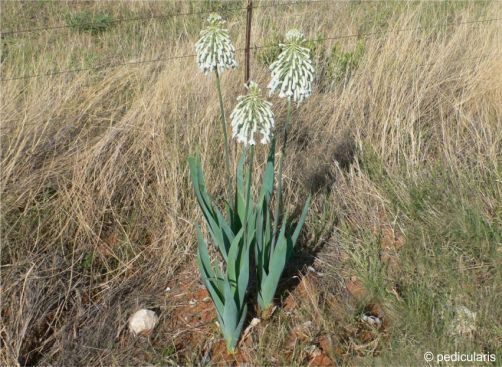
Fig.1. Pseudogaltonia clavata plants flowering in habitat.
Description
Description
Pseudogaltonia clavata is a deciduous perennial with tuberous roots that grows 0.4–1.3 m tall. The large, ovoid bulb is particularly impressive, measuring up to 220 mm long and 170 mm in diameter, with a distinctive fibrous outer coat and sturdy neck that resembles a coconut. Stiff red-brown hairs are present at the base. Each bulb produces about nine erect, lance-shaped leaves arranged in a rosette. The leaves are grey-green and leathery, at least 300 mm long and up to 90 mm wide at the base, with pointed tips and many parallel veins.
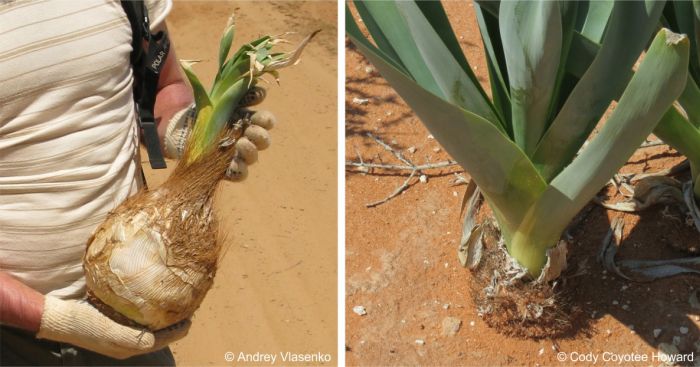
Fig.2. The distinctive bulb of Pseudogaltonia clavata, which gave rise to its common name, desert coconut.
Plants flower in midsummer (December and January). The flower stalk is rounded and smooth, about 240 mm long, bearing numerous flowers arranged in a raceme. Small, narrow, pointed bracts 10–20 mm long, appear at the base of each flower stalk that measures 22–27 mm long. The flowers are initially club-shaped in bud, becoming slightly curved when fully open and reaching 30–50 mm in length. Each tubular flower is white to cream with green bands, slightly swollen at the base. The flower tube is 10–90 mm long and 5 mm wide, with segments that are oblong with rounded tips, 10–20 mm long and 6 mm wide. The fruit is a three-chambered capsule.
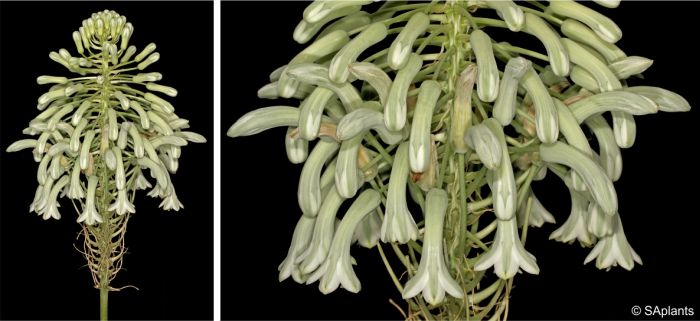
Fig.3. Pseudogaltonia clavata inflorescence and a close-up of the flowers, of a cultivated plant in Kirstenbosch National Botanical Garden.
Pseudogaltonia clavata is easily distinguished from the only other species in the genus, P. liliiflora, by its smaller bracts and pendent flowers. Although both species share robust, dense racemes of pale, greenish white tubular flowers, P. liliiflora has distinctive horizontally-spreading flowers that curve sharply upward at the tips, with upward-facing flower tubes.
Conservation Status
Status
Pseudogaltonia clavata is currently assessed as Least Concern (LC) on the Red List of South African Plants. The species was not selected in any one of four screening processes for highlighting potential taxa of conservation concern for detailed assessment and was hence given an automated status of Least Concern.
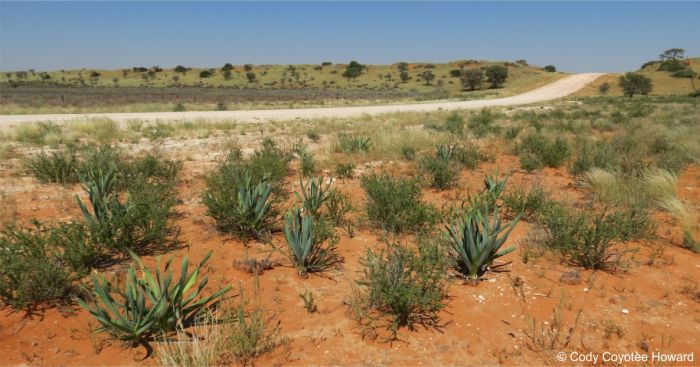
Fig.4. Pseudogaltonia clavata in its natural habitat, Karas Region, Namibia.
Distribution and habitat
Distribution description
Pseudogaltonia clavata is endemic to southern Africa, ranging from the northern Richtersveld Region of South Africa to Namibia, Botswana and Angola. It typically grows in arid regions, favouring well-drained, sandy or rocky soils in fynbos and renosterveld vegetation types. The species is often found in mountainous areas, on rocky slopes and in ravines.
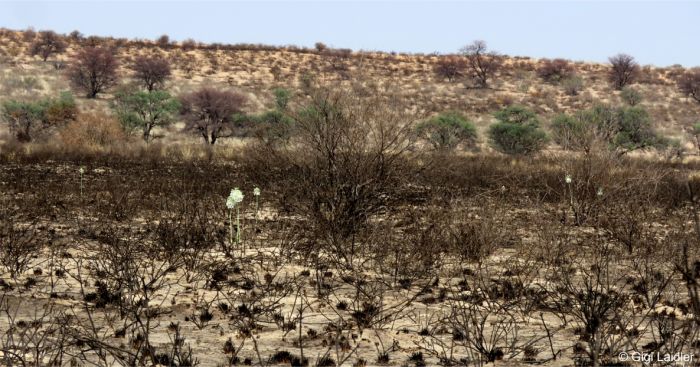
Fig.5. Pseudogaltonia clavata in its natural habitat, Kgalagadi Transfrontier Park.
Derivation of name and historical aspects
History
The genus Pseudogaltonia is a small genus of two species endemic to the arid regions of southern Africa, ranging from the Richtersveld through Namibia to Botswana and Angola. Pseudogaltonia belongs to the family Hyacinthaceae, which comprises 700–900 species of bulbous plants with centers of diversity in both southern Africa and the Mediterranean Region. The Hyacinthaceae is considered an important horticultural family. Many members of this family are also significant in traditional medicine, and some are highly toxic. Within Hyacinthaceae, Pseudogaltonia is placed in the subfamily Ornithogaloideae, which includes about 300 species. Some modern classification systems include Hyacinthaceae within the broader family Asparagaceae as subfamily Scilloideae, though it is traditionally recognized as a distinct family.
Pseudogaltonia clavata was first described as Galtonia clavata by Maxwell T. Masters in The Gardener's Chronicle in 1884. The species has been the subject of several taxonomic revisions and has undergone numerous name changes, being variously known as Lindneria clavata, Ornithogalum clavatum and Hyacinthus pechuelii, among others. The most recent treatment recognizes it in the genus Pseudogaltonia, where it is distinguished from the related genus Galtonia by its curved perianth tube with exserted stamens, compared to the straight perianth tube with included stamens of Galtonia.
The genus name Pseudogaltonia means ‘false Galtonia’, referring to its superficial resemblance to the genus Galtonia. The specific epithet clavata comes from Latin, meaning ‘club-shaped’, referring to the shape of the flowers in bud.
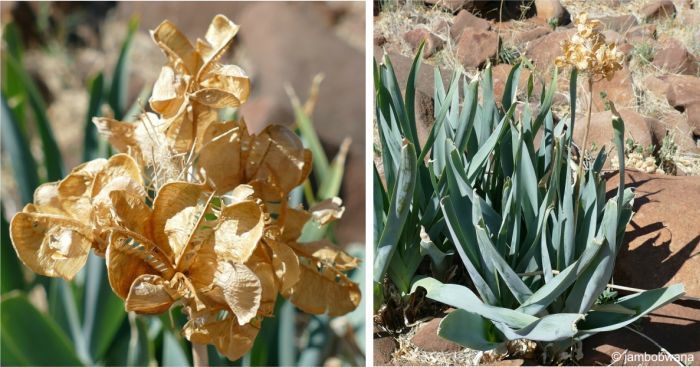
Fig.6. The empty fruit capsules of Pseudogaltonia clavata.
Ecology
Ecology
Pseudogaltonia clavata has adapted to survive in extremely harsh conditions by remaining dormant through severe droughts that can span many years. Like many members of the Hyacinthaceae, all parts of the plant are highly toxic.
Uses
Use
While no specific cultural uses have been documented for Pseudogaltonia clavata, the Hyacinthaceae family includes many important horticultural plants, such as the garden hyacinths (Hyacinthus), bluebells (Scilla) and chinkerinchees (Ornithogalum). A closely related genus, Galtonia, is popular in gardens, particularly G. candicans, known as the summer hyacinth, which produces tall spikes of pendent white flowers.
Growing Pseudogaltonia clavata
Grow
Pseudogaltonia clavata is well-suited to cultivation in large containers or rock garden pockets. These impressive plants grow in spring and summer, flower in midsummer, and are dormant during winter. The white to cream flowers open sequentially up the tall spike, creating an architectural display that lasts several weeks. While not commonly available in cultivation, its striking coconut-like bulb and impressive flower spikes make it a rewarding plant for warm, sunny gardens.
Propagate P. clavata from bulbs or seeds. Bulbs might be difficult to obtain as offsets are seldom formed. Plant bulbs in spring in well-drained soil with the top third exposed. A suitable growing medium consists of two parts coarse river sand or grit, one part loam, and one part finely sifted compost or finely milled bark. Pots should be at least 25–30 cm in diameter to accommodate the large bulbs, which can grow up to 15 cm in diameter. Sow seeds thinly in spring in deep seed trays or pots and keep them warm. Fresh seeds germinate easily within three weeks. This species has a remarkably long juvenile period, taking at least five years to flower under ideal conditions. Apply liquid seaweed fertilizer monthly to help seedlings reach maturity faster, but discontinue once flowering size is reached, as this can result in luxuriant leaf growth at the expense of flowers. Allow seedlings to establish themselves for three years before being planted into permanent containers or into the garden. Once established, the bulbs like to remain undisturbed for many years.
During the growing season (spring to late autumn), water thoroughly at weekly intervals. Reduce watering as the leaves die back and maintain an absolutely dry winter dormant period. To break winter dormancy, keep bulbs warm and water them only when new growth appears. Coming from arid regions of southern Africa, P. clavata requires not only full sun but also warm temperatures for optimal growth and flowering. While it can withstand temperatures down to 5°C, warmer conditions significantly enhance growth and reduce the time to flowering.
While the leaves and flowers are rarely troubled by insect pests, the bulbs are susceptible to fungal rot if not kept dry during winter dormancy. Plants grown in containers can be moved to a warm, protected position during winter to control moisture levels.
References
- Angiosperm Phylogeny Group. 2003. An update of the Angiosperm Phylogeny Group classification for the orders and families of flowering plants: APG II. Botanical Journal of the Linnean Society 141: 399–436.
- Balsinhas, A.A., Engelbrecht, V.M., Harding, G.B., Joffe, H., Stirton, C.H. & Wells, M.J. 1986. Catalogue of problem plants in southern Africa. Memoirs of the Botanical Survey of South Africa 53: 1–658.
- Duncan, G. 2008. A desert beauty at Kirstenbosch. Veld & Flora 94: 200–201.
- Goldblatt, P., Manning, J.C. & Williamson, G. 2009. Pseudogaltonia liliiflora (Ornithogaloideae), a new species from the Richtersveld, Northern Cape. Bothalia 39: 229–231.
- Howard, C.C. 2017. Observation of Pseudogaltonia clavata, Karas Region, Namibia. iNaturalist. Online. https://www.inaturalist.org/observations/71977361.
- Jambobwana. 2019. Observation of Pseudogaltonia clavata, Kunene, Namibia. iNaturalist. Online. https://www.inaturalist.org/observations/232488433.
- Laidler, G. 2022. Observation of Pseudogaltonia clavata, Kgalagadi Transfrontier Park. iNaturalist. Online. https://www.inaturalist.org/observations/144658491.
- Manning, J.C., Forest, F. & Goldblatt, P. 2009. The correct name and authority for Galtonia (Hyacinthaceae subfam. Ornithogaloideae). Bothalia 39: 227–228.
- Manning, J.C., Forest, F., Devey, D.S., Fay, M.F. & Goldblatt, P. 2009. A molecular phylogeny and a revised classification of Ornithogaloideae (Hyacinthaceae) based on an analysis of four plastid DNA regions. TAXON 58(1):1-107.
- Pedicularis. 2006. Photo of Pseudogaltonia clavata, Halali, Namibia. iNaturalist. Online. https://www.inaturalist.org/photos/345006931
- Phillips, E.P. & Lansdell, K.A. 1935. Pseudogaltonia clavata (Masters ex Baker) Phillips. The Flowering Plants of South Africa 15: t. 580.
- Raimondo, D., Von Staden, L., Foden, W., Victor, J.E., Helme, N.A., Turner, R.C., Kamundi, D.A. & Manyama, P.A. (eds) 2009. Red list of South African plants. Strelitzia 25. South African National Biodiversity Institute, Pretoria.
- SAplants. 2014. Image of Pseudogaltonia clavata flowers, Kirstenbosch National Botanical Garden. Wikimedia Commons. Online. https://commons.wikimedia.org/wiki/File:Pseudogaltonia_clavata_1DS-II_4-5869.jpg.
- SAplants. 2014. Image of Pseudogaltonia clavata inflorescence, Kirstenbosch National Botanical Garden. Wikimedia Commons. Online. https://commons.wikimedia.org/wiki/File:Pseudogaltonia_clavata_1DS-II_4-5870.jpg.
- Smith, C.A. 1966. Common names of South African plants. Memoirs of the Botanical Survey of South Africa No. 35. Government Printer, Pretoria.
- Speta, F. 1998. Hyacinthaceae. In: K. Kubitzki (ed.), The families and genera of vascular plants 3: 261–285. Springer, Berlin.
- Vlasenko, A. 2010. Photo of Pseudogaltonia clavata, Khomas, Namibia. iNaturalist. Online. https://www.inaturalist.org/photos/240233032
Credits
Natasha Lombard
National Herbarium, Pretoria
December 2024
Acknowledgments: images by Cody Coyotee Howard, jambobwana, Gigi Laidler, pedicularis, SAplants and Andrey Vlasenko.
Plant Attributes:
Plant Type: Bulb
SA Distribution: Northern Cape
Soil type: Sandy, Loam
Flowering season: Early Summer, Late Summer
PH:
Flower colour: White
Aspect: Full Sun
Gardening skill: Average
Special Features:
Horticultural zones
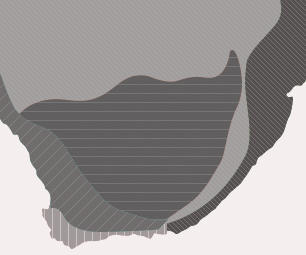







Rate this article
Article well written and informative
Rate this plant
Is this an interesting plant?
Login to add your Comment
Back to topNot registered yet? Click here to register.